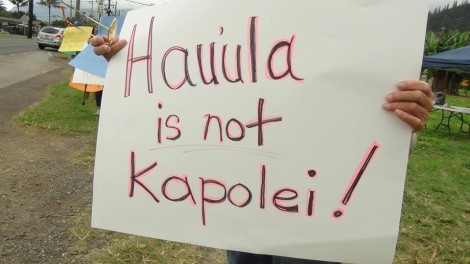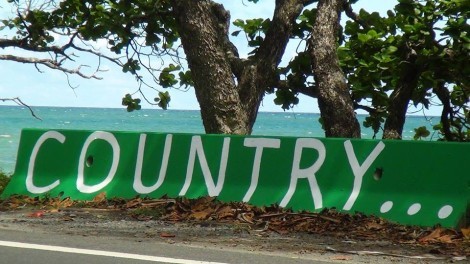Press Conference
November 1, 2019 Friday
We are deeply disappointed that we have received the silent treatment from Governor David Ige at this point.
“The most affected people and the most affected community have been opposing these additional eight (8) industrial turbines for over ten (10) years. The answer to the authorities had always been ‘no’ to the Fortune 500 Corporations, HECO and also those involved in the Environment Review Process.
However, their voices have consistently been ignored and dissed.
Kahuku already has twelve (12) industrial turbines. It is already bearing the disproportionate burden of wind energy. Its residents have already been suffering the health impacts from these existing turbines.
The PUC action of December 31, 2014 was a blatant violation of Hawaii’s renowned Environmental Laws specifically contained in the HAR Chapter 343. Consultation with the affected community is the first of several elements of public participation in the environmental review process established under Chapter 343. The centrality of public participation to rational environmental management has long been recognized as good policy, and it is explicitly identified as a founding principle in the legislative findings that preface the EIS law.
§343-1 Findings and purpose. The legislature finds that the quality of humanity’s environment is critical to humanity’s well being, that humanity’s activities have broad and profound effects upon the interrelations of all components of the environment, and that an environmental review process will integrate the review of environmental concerns with existing planning processes of the State and counties and alert decision makers to significant environmental effects which may result from the implementation of certain actions. The legislature further finds that the process of reviewing environmental effects is desirable because environmental consciousness is enhanced, cooperation and coordination are encouraged, and public participation during the review process benefits all parties involved and society as a whole.
To further violate the standing environmental laws to the face of the most affected people, the Public Utilities Commission further violated the laws by approving the contract between HECO and then Champlin/GEI in order to assist the corporations in its federal tax incentives deadline.
Recently, a former PUC Counsel revealed that he counseled against the December 31, 2014 decision because the EIS for this project was pending and NOT completed yet.
Furthermore, the Hawaii Consumer Advocate at the time, Jeffrey Ono, also advised for PUC to wait for the environmental review to be completed before approving the wind farm. Mr.Ono’s opinion was that the “EIS could inform a decision on whether the project was in the public interest: specifically whether its benefits outweighed its negative impacts on the community.”
Because of the flawed process, there continues to be controversies. Approximately 200 residents were arrested in resistance to this process.
Keep the North Shore Country has filed a lawsuit challenging the Hawaii Board of Land and Natural Resources’ acceptance of a conservation plan and license to kill certain numbers of endangered Hawaiian hoary bats as an incidental side effect of the project.
Life of the Land’s challenge focuses on the PUC’s approval of the contract between the wind farm and HECO, which the PUC approved.
Governor Ige’s statement by his communications team that “we were told
Despite all the known facts about this flawed process, the AES COO, Mark Miller continues his arrogant and robotic PR answer to all compelling concerns:
“We remain in close touch with people throughout the North Shore community – including those who have lingering questions about our project. We are here and ready to talk to anyone interested in learning more.” But he pushing onward and forward and not taking “no” for an answer.
On October 16, 2019 to the Star Advertiser, “The company planning to build a wind farm in Kahuku “should be allowed to proceed,” Gov. David Ige’s office.
We call on Governor Ige to take care of his primary kuleana – to put the public interest nor the well being of his constituents’, including the children, interests and well-being. The industrial turbines will be too close to the Kahuku Elementary School, the Kahuku High School, residential homes, hospital and farmer’s dwellings, and also the Bobby Benson Center.
What are residents supposed to do if the very government regulatory agencies that must protect the process and the public interest violated its very laws and rules on the books?
When residents exercise their desperate protests to be heard, they are met with the strong force of the HPD and arrests.
We call on Governor Ige to implement pono leadership on these irreparable damages being done to his constituents today.
1. To allow the citizen’s various legal pending processes to be heard before allowing further deliveries to the sites.
2, to direct the Attorney General to expunge the approx.127 arrests made thus far. The people were simply trying to be heard because the very agencies that are supposed to protect them broke its own laws and regulations.
Hawaii has one of the best environmental laws in the nation. If all state and county agencies had adhered to the laws in the books, these acrimonious and actions could have been easily avoided.
Kahuku residents cannot continue to be guinea pigs. Green Energy is important for our island home but environment justice and social justice must integral parts of this movement.
References:
PUC’s Former Lawyer Says Approval Of Kahuku Wind Farm Violated Law
NOTE: HAR 11-200-9(C) requires agencies proposing an action to analyze alternatives to the nominal project proposal in the environmental assessment.
Consideration of alternatives is a core element of the environmental planning process and offers one of the key tools available to achieve the purpose of environmental impact minimization. The OEQC Guidebook includes specific instructions regarding the discussion of alternatives.
Consider alternative methods and modes of your project, and discuss them in the draft EA. Select the one with the least detrimental effect to the environment. Alternatives to consider include:
• Different sites: is one site less likely to infringe on an environment that needs protection, such as a wetlands or an historic district?
• Different facility configurations: is one configuration less likely to intrude on scenic viewplanes?
• Different implementation methods: can a rocky area be cleared by backhoe removal rather than blasting?
Alternative analysis should include input from the community. Community members may be aware of concerns and impacts that make a particular alternative more or less desirable. [OEQC Guidebook, p.15]
The Guidebook also offers insight into what’s expected in an EA in the way of alternatives analysis in its discussion of questions to ask when reviewing an EA.
Are alternatives to the proposed project (including no project at all) adequately explored? Are there other ways to carry out the project which may be less damaging to the environment? Are different designs or approaches discussed sufficiently? What basic improvements can you suggest? [OEQC Guidebook, p.9]
Thus, alternatives to discuss include not just the no action case, but also actions of a significantly different nature that would provide similar benefits with different minimal impacts, different designs or project details, different locations, different facility configurations, and even the alternative of postponing an action pending development of a more viable proposal.






